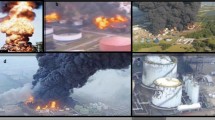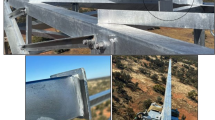Abstract
To guarantee the safety of nuclear power plants during operation and maintain coolant pipe integrity during life time, the evaluation of the coolant pipe integrity is necessary. The welded part is the most vulnerable place for the crack initiation and subsequent growth. Moreover, the weld width and the crack location also affected the deformation and fracture behavior of the welded part. Therefore, the evaluation of the welded part integrity in the coolant pipe while considering the residual stresses and welding defects is very important. In recent years, FE analysis about the welded parts in a pipe has been performed to evaluate the fracture toughness characteristics for the welded parts with various welding parameters. However, test method has not been proposed to evaluate the fracture toughness properties of the welded parts in a pipe. In this study, piping materials which are equivalent to those in safety injection pipes of nuclear power plants were welded to form a butt welding part. Then, fracture toughness tests for base metal, the similar and the dissimilar welded parts were performed to evaluate the effect of welding parameters.
Similar content being viewed by others
Abbreviations
- α :
-
Coefficient of Ramberg-Osgood model
- n :
-
Strain hardening exponent of Ramberg-Osgood model
- σ :
-
Stress
- ε :
-
Strain
- σ 0 :
-
Yield strength as a reference
- ε 0 :
-
Yield strain as a reference
References
Huh, N. S., Shim, D. J., Kim, Y. J., and Kim, Y. J., “Reference Stress based Fracture Mechanics Analysis for Circumferential Through-Wall Cracked Pipes — Comparison with Pipe Test Data,” Proc. of KSME Conference, pp. 389–395, 2003.
Han, T. S., Huh, N. S., and Park, C. Y., “Evaluation of Crack Growth Estimation Parameters of Thick-Walled Cylinder with Non-Idealized Circumferential Through-Wall Cracks,” Journal of the Korean Society for Nondestructive Testing, Vol. 33, No. 2, pp. 138–146, 2013.
Yi, H. B., Lee, J., and Kang, T., “A Seismic Stability Design by the KEPIC Code of Main Pipe in Reactor Containment Building of a Nuclear Power Plant,” J. Korean Soc. Precis. Eng., Vol. 28, No. 2, pp. 233–238, 2011.
Li, S., Zhang, H., Li, S., Wang, Y., Xue, F., and Wang, X., “Probabilistic Fracture Mechanics Analysis of Thermally Aged Nuclear Piping in a Pressurized Water Reactor,” Nuclear Engineering and Design, Vol. 265, pp. 611–618, 2013.
Saxena, S. and Ramachandra Murthy, D., “On the Accuracy of Ductile Fracture Assessment of Through-Wall Cracked Pipes,” Engineering Structures, Vol. 29, No. 5, pp. 789–801, 2007.
Chiodo, M. S., and Ruggieri, C., “J and CTOD Estimation Procedure for Circumferential Surface Cracks in Pipes under Bending,” Engineering Fracture Mechanics, Vol. 77, No. 3, pp. 415–436, 2010.
ASME, “BPVC Section XI-Rules for Inservice Inspection of Nuclear Power Plant Components,” 2013.
ASTM, “Standard Test Method for Measurement of Fracture Toughness,” Document ID: E1820, 2001.
ASTM, “Standard Test Methods for Tension Testing of Metallic Materials,” Document ID: E8/E8M, 2013.
Castelluccio, G. M., Perez Ipiña, J. E., Yawny, A. A., and Ernst, H. A., “Fracture Testing of the Heat Affected Zone from Welded Steel Pipes using an in Situ Stage,” Engineering Fracture Mechanics, Vol. 98, pp. 52–63, 2013.
Kim, Y. J. and Schwalbe, K. H., “Mismatch Effect on Plastic Yield Loads in Idealized Weldments-I: Weld Centre Cracks,” Engineering Fracture Mechanics, Vol. 68, pp. 163–182, 2001.
Kim, Y. J. and Schwalbe, K. H., “Mismatch Effect on Plastic Yield Loads in Idealized Weldments-II: Heat Affected Zone Cracks,” Engineering Fracture Mechanics, Vol. 68, pp. 183–199, 2001.
Rahman, S., “Probabilistic Elastic-Plastic Fracture Analysis of Circumferentially Cracked Pipes with Finite-Length Surface Flaws,” Nuclear Engineering and Design, Vol. 195, No. 3, pp. 239–260, 2000.
Saxena, S. and Ramachandra Murthy, D., “Elastic-Plastic Fracture Mechanics based Prediction of Crack Initiation Load in Through-Wall Cracked Pipes,” Engineering Structures, Vol. 26, No. 9, pp. 1165–1172, 2004.
Bouchard, P., “Validated Residual Stress Profiles for Fracture Assessments of Stainless Steel Pipe Girth Welds,” International Journal of Pressure Vessels and Piping, Vol. 84, No. 4, pp. 195–222, 2007.
Wang, H. T., Wang, G. Z., Xuan, F. Z., and Tu, S. T., “Fracture Mechanism of a Dissimilar Metal Welded Joint in Nuclear Power Plant,” Engineering Failure Analysis, Vol. 28, pp. 134–148, 2013.
Kim, J. Y., Cho, G. J., and Kim, C. H., “Ultrasonic Signal Analysis with DSP for the Pattern Recognition of Welding Flaws,” Int. J. Precis. Eng. Manuf., Vol. 1, No. 1, pp. 106–110, 2000.
Kim, Y. J., Kim, J. S., Cho, S. M., and Kim, Y. J., “3-D Constraint Effects on J Testing and Crack Tip Constraint in M(T), SE(B), SE (T) and C(T) Specimens: Numerical Study,” Engineering Fracture Mechanics, Vol. 71, No. 9, pp. 1203–1218, 2004.
Park, J. S., Seok, C. S., and Kim, Y. J., “A Study on the Evaluation of the Pipe Fracture Characteristic,” Trans. Korean Soc. Mech. Eng., Vol. 29, No. 1, pp. 107–114, 2005.
Author information
Authors and Affiliations
Corresponding author
Rights and permissions
About this article
Cite this article
Shin, IH., Park, SK., Kim, SY. et al. Effect of welding parameters on fracture resistance characteristics of nuclear piping. Int. J. Precis. Eng. Manuf. 16, 65–71 (2015). https://doi.org/10.1007/s12541-015-0008-2
Received:
Revised:
Accepted:
Published:
Issue Date:
DOI: https://doi.org/10.1007/s12541-015-0008-2




